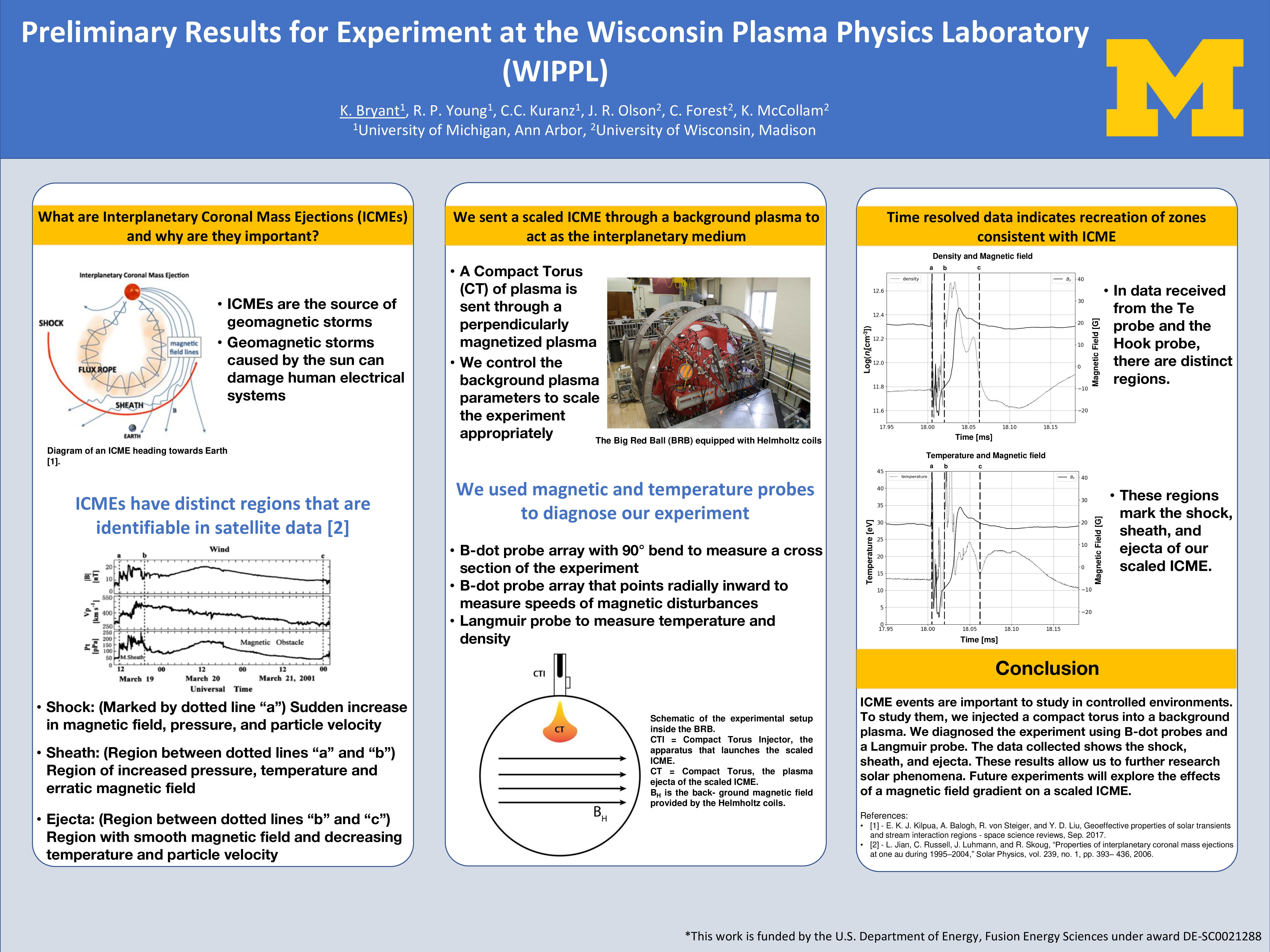Authors: Khalil Bryant (University of Michigan), Rachel Young (University of Michigan), Joseph Ray Olson (University of Wisconsin), Cary Forest (University of Wisconsin), Karsten McCollam (University of Wisconsin)
The Sun, being an active star, undergoes eruptions of magnetized plasma that reach
the Earth and cause the aurorae near the poles. These eruptions, called Coronal Mass
Ejections (CMEs) send plasma and magnetic fields out into space. CMEs that reach
planetary orbits are called Interplanetary Coronal Mass Ejections (ICMEs) and are a
source of geomagnetic storms, which can cause major damage to our modern electrical
systems with limited warning. To study ICMEs, we devised a scaled experiment using
the Big Red Ball (BRB) plasma containment device at the Wisconsin Plasma Physics
Laboratory (WiPPL). These experiments inject a compact torus of plasma as an ICME
analog through an ambient plasma inside the BRB, which acts as the interplanetary
medium (IM). Magnetic and temperature probes provide 3D magnetic field information
in time and space, as well as temperature and density as a function of time. Using
this information, we can identify features in the compact torus that are consistent with
those in real ICMEs. Namely, we identify the shock, sheath, and ejecta of an ICME
event. This experiment acts as a first step to providing information to inform predictive
models and allow us to protect our systems in the event that a powerful ICME were
to strike.


